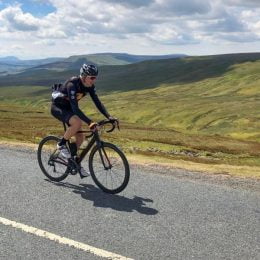Bagnères de Luchon: Pyrenees cycling mecca (for Col de Peyresourde, Col du Portillon, Superbagnères + more)
Deep in the heart of the French Pyrenees lies the old spa town of Bagnères de Luchon, or Luchon as the locals call it.
Luchon is famous in the cycling world due to the Tour de France, which travels through the town on a regular basis. It’s a great base for Pyrenees cycling holidays, particularly for cyclists looking to cycle the Col de Peyresourde and other big names.
Within easy access of this lively little town are a number of big climbs with diverse scenery and varying degrees of difficulty. Luchon basically sits in a bowl and is surrounded on all sides by mountains – perfect for those looking to conquer some Pyrenees cycling climbs!
Cycle ten minutes to the south and you are at the foot of the Col du Portillon. A few minutes in the opposite direction will put you on the initial slopes of the famous Col de Peyresourde (Tour de France fans will be very familiar with this climb!).
Planning a trip to cycle Col de Peyresourde and friends?
You’re in the right place.
In this guide, you’ll find lots of information to help you plan an unforgettable Pyrenees cycling tour: detailed information on the best cycle routes from Bagnères de Luchon, plus where to stay, when to visit and what you need to know about bike hire in Luchon.
Not sure if this region of the Pyrenees is right for you? Back up one and read our overview of the best regions for cycling in the Pyrenees here.
Looking for Pyrenees gravel cycling? Read this.
Bagnères de Luchon cycle routes
Five days in Luchon will allow you to experience a lot of fantastic cycling in the Pyrenees and famous Tour de France mountains, as well as giving your legs a good work out! In that time , assuming the weather and your legs play ball, you should be able to ride the big names: Col de Peyresourde, Col du Portillon, Superbagnères and Port de Balès.
If you’re really pushing it, you may even get over to the Tourmalet (but that’s a big day out – see more info below).
We should be clear from the outset that there are not many flat roads in this part of the world. If you are planning a cycling holiday in Bagnères de Luchon then you will need your climbing legs and a 11/32 rear cassette! That said if you know what to expect, we guarantee that you will enjoy your stay in this part of the world, as you clock up the metres of elevation.
 Villages and mountains around Bagneres de Luchon (credit: ©AG/Pyrenees 31)
Villages and mountains around Bagneres de Luchon (credit: ©AG/Pyrenees 31) The photogenic village of Saint Beat (credit: ©AG/Pyrenees 31)
The photogenic village of Saint Beat (credit: ©AG/Pyrenees 31) Tour de France visits the Col de Peyresourde (credit: ©AG/Pyrenees 31)
Tour de France visits the Col de Peyresourde (credit: ©AG/Pyrenees 31)Tourmalet and climbs west of Luchon
If you want a mammoth day out then Sainte-Marie-de-Campan, which is at the eastern base of the Col du Tourmalet (17.2k @ 7.4%), is around 60 kilometres away – but you do have to negotiate the Col de Peyresourde and Col d’Aspin on the way to get to it!
One option is to take a car over to the town of Arreau (33 kilometres from Luchon) where you can then also easily access the well-known climbs of Hourquette d’Anzican and the Col de Portet in the vicinity of Sant Lary Soulon.
Alternatively, if you’re interested in conquering more than just the Tourmalet, and want to tackle climbs west of Luchon like Col d’Aubisque, Hautacam and Luz Ardiden, we’d suggest you stay further west of Luchon. We based ourselves in Argeles-Gazost for those climbs and this guide should really help you plan a trip to conquer those climbs. We’ve also written this article on the best place to stay to cycle the Pyrenees.
Climbs from Luchon
All metrics in this article are approximate.
One of the great things about cycling from Luchon is the number of climbs that are pretty much on the doorstep. The scenery is nothing short of spectacular. Here are a few photos and climb guides to help you plan your visit!
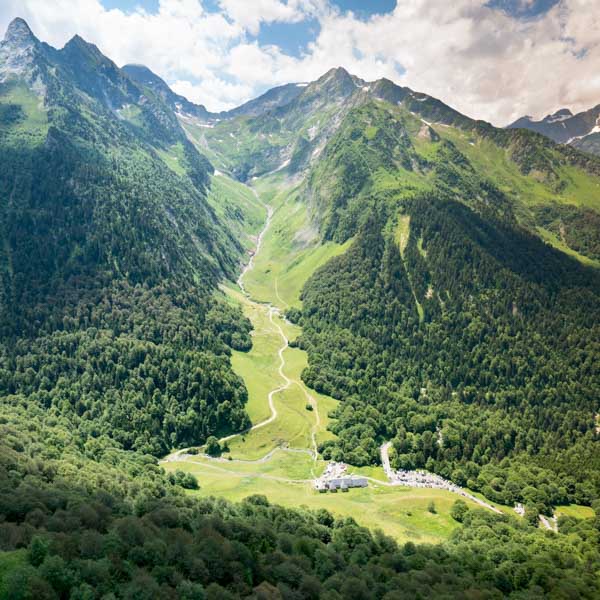 Mountains around Luchon (credit: ©AG/Pyrenees 31)
Mountains around Luchon (credit: ©AG/Pyrenees 31)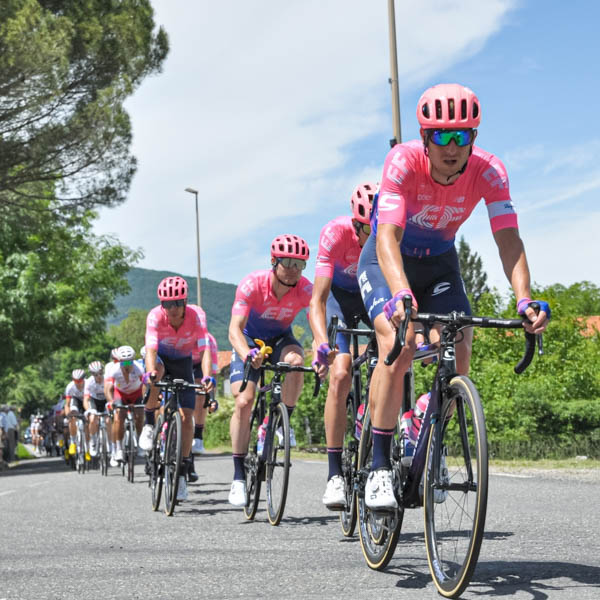 On the Col de Peyresourde (credit: ©AG/Pyrenees 31)
On the Col de Peyresourde (credit: ©AG/Pyrenees 31)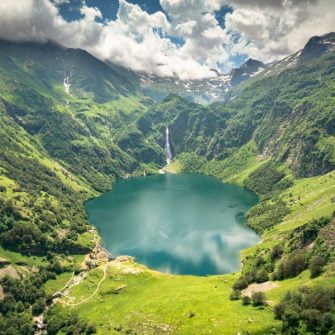 Stunning landscapes of the Luchon area (credit: ©AG/Pyrenees 31)
Stunning landscapes of the Luchon area (credit: ©AG/Pyrenees 31)Col de Peyresourde
Col de Peyresourde profile
Introduction
15.3km at 6.1% average gradient
The Peyresourde is a legendary Tour de France ascent due to its proximity to the Hors Categorie, Col du Tourmalet. The Tour has climbed the Peyresourde in excess of 50 times, that’s about once every two years!
The Peyresourde is normally used in combination with other mountains, but it is a fantastic climb in its own right.
What to expect
The climb starts from Luchon at a roundabout where the D125 meets the D618. The road signposted to Arreau starts on relatively steep roads as it passes through a number of small communes. Approximately five kilometres from the summit, the verdant scenery comes into view as you wind your way between the peaks of the Midi Pyrenees.
A few kilometres from the top, high above you, you can see three massive switchbacks which are cut into the side of the mountain. If you’re not cycling against the clock, it’s worth stopping on the final one as the view down the valley back to Luchon is simply breath-taking (and is also a great photo opportunity!).
Just around the corner from the final hairpin you will see the summit sign, probably a huge snow-capped peak in the distance and the most famous Crepe House in the world!
Now you have a choice whether to stop at the Crepe House for a crepe or two (and a drink) or take a left hand turn and go up to the Peyragudes ski resort (you could always stop for crepes on the way down!). It’s a short and gentle climb but offers some exhilarating views to the other side of the valley towards the Val Louron ski station.
The Tour de France finished on the aircraft runway here in 2017 and saw the Frenchman, Roman Bardet, win the stage.
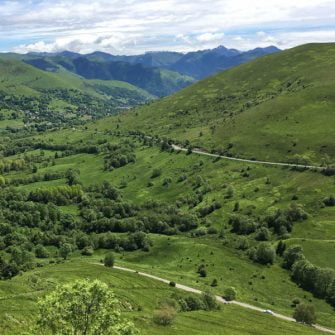 View back down the Peyresourde
View back down the Peyresourde Summit sign on the Col de Peyresourde!
Summit sign on the Col de Peyresourde! Looking back over the switchbacks just climbed
Looking back over the switchbacks just climbed
Highlights
- Easily accessible from the town.
- The Col de Peyresourde gradient is never too steep.
- Very quiet roads on the second half of the climb, with amazing scenery and tranquil environment in which to climb. The views from the final hairpins are stunning!
- We enjoyed tagging on the short ascent up to the Peyragudes.
- Distance markers every kilometre.
- The best (and most welcome) crepes in the world!
- The descent – awesome!
Tips
- As you leave Luchon on the first part of the climb, the road is narrow in places and there is a moderate amount of traffic.
- We didn’t see anywhere to refuel after leaving the town until we got to the Crepe House at the top.
- You have three options at the summit. You can turn left to the Peyragudes, retrace your route back to town or go straight over the top. If you take the latter, you will have to climb the Peyresourde from the west in order to get back to Luchon (10.3k @ 6.4%).

Possibly the most welcome creperie anywhere!
Col du Portillon
Col du Portillon profile
Introduction
10.1k at 6.6% average gradient
The Col du Portillon is not particularly well known, despite having starred in both the Tour de France and Vuelta a España.It’s a mountain pass that connects Luchon in France and Bossòst in Spain. On the Spanish side, it’s called the Port d’eth Porthilhon. The old border crossing point sits right at the top of the col.
Whilst it’s a relatively unspectacular ascent, it can be a bit of a slog at times.
It’s also got the novelty factor of being able to use it to ride into another country (Spain) just for lunch.
What to expect
The Col du Portillon is yet another climb that starts right in the town centre.
Starting off very gently on the lower slopes as you leave Luchon, the D618A suddenly kicks up after around three kilometres and averages around 8% for the rest of the effort.
There’s not much to see as you progress, as the roadside views are mainly populated by dense forests as you approach the Val d’Aran.
Likewise, there was really nothing much to see at the border at the top of the climb!
We therefore descended down to Bossòst, which is a quaint village on the Spanish side, built at the side of the Garonne river. Here there are an assortment of shops, cafes and restaurants, and we had lunch at the Restaurante Denia overlooking the river.
The return from Spain, up the N141, is a little steeper than the other side (at 8.6 kilometres in length with an average gradient of 6.8%). It’s characterised by an abundance of switchbacks in the early kilometres.
The road is treelined for much of the lower slopes and the shade is welcome in the midday sun. About halfway up is an animal park which houses animals including brown bears. Thankfully they were all under lock and key as we ground our way to the top!
The descent from the summit back into France is quite fast. This descent is where Adam Yates crashed whilst leading a stage in the 2018 Tour de France, so safety is certainly the order of the day…
 Col du Portillon summit – there’s not much else to see!
Col du Portillon summit – there’s not much else to see!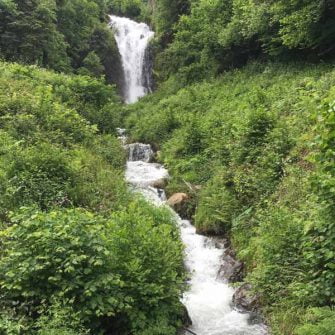 Admiring the natural scenery on the Portillon
Admiring the natural scenery on the PortillonHighlights
- The fact that you can ride from France into Spain for the day, have lunch and return!
- Easy to access from Luchon
Tips
- Be careful on the descent, even on a hot day we found a lot of water on the road that had run down from the hillside that the sun couldn’t get to because of the trees.
- There is nowhere to get food and water until you descend into Bossòst (Spain).
- The pass is normally open all year around, but check for the Col du Portillon ‘Ouvert’ (open) sign as you leave Luchon!
- When we were there, there was no border control, but we always take our passport when crossing borders just in case.
Superbagnères
Superbagnères profile
Introduction
17.4k @ 6.7% average gradient
All the cyclists we know that have ridden Superbagnères speak very highly of it.
It’s classified as a Hors Categorie ascent, so it’s obviously a tough climb: the final 6 kilometres average around 9%.
What to expect
In keeping with most other climbs around Bagnères de Luchon, this one also starts right in the town centre. Taking the D125 in a southerly direction, carry straight on at the junction (onto the Avenue Vénasque) when the road meets the D618A and follow the road ahead.
The first few kilometres are similar to the Portillon, as huge forested areas obscure much of your view. The road has very little traffic and all you can hear is the sound of water constantly crashing down from the hillsides into Le Pique river.
After around 5 kilometres the road splits and you need to take the right-hand fork (the left is signposted to the Hospice de France). The gradient now starts to ramp up to around 6% initially and soon to 9% as you progress.
About 4 kilometres from the top the treeline is finally beneath you and you can see the huge snow-capped peaks of the Pyrenean chain which divides France from Spain.
At the top you will find an old ski station and a couple of cafes and bars. It’s nothing special but the views from 1,800 metres are sensational.
There is nowhere else to go so your only option is to descend all the way back into Luchon.

View from Superbagnères (credit: ©AG/Pyrenees 31)
Highlights
- Like the Port de Balès if you’re looking for a stiff test then Superbagnères will not disappoint.
- The road is not a mountain pass as it ends at the ski station and for that reason it is a very quiet road.
Tips
- Refreshments are available to the top before you start the descent. There is a small café and a bar selling food but it’s advisable to check opening times before you start.
- In the colder months it’s always a good idea to check the Superbagnères webcam before you start the climb to get an idea of the snow covering.
- Likewise if you search online for Superbagnères meteo (weather) you will get the locally prepared weather forecast.
Port de Balès
Port de Balès profile
Introduction
19.7k @ 5.7% average gradient
Port de Balès is a relatively unknown climb, mainly due to the fact that it was not used in the Tour de France until 2007.
However, it soon became popular after the “dropped chain incident” between Alberto Contador and Andy Schleck in the 2010 race.
Interestingly, the climb has also been used once in the Vuelta España.
What to expect
Leaving Luchon on the D618, you follow the Peyresourde route for the first four kilometres. As you get halfway around a left-hand hairpin, you will see a signpost to your right signposted Port de Balès. Take this turn onto the D51.
The road then cuts into the left-hand side of the mountain, with a river below to the right. Just before the village of Saint Paul d’Oueil, the road then doubles back across a small bridge and crosses to the other side of the valley.
Once through the village, the landscape really starts to open up and for the first time you can see the distant mountains.
When you get to the first switchback, just after Bourg d’Oueil, you suddenly get the sense that you’re on really high ground. The vegetation starts to thin and the surrounding peaks are seemingly within your grasp.
The last couple of kilometres are quite steep (double digit gradients in places) and the surroundings start to develop more of a moorland feel, devoid of trees and looking decidedly barren.
There’s nothing much at the top save for a few signs and a car park.
You can either reverse your route back down the mountain for 20 kilometres (which we did) or continue for another 50 kilometres, mainly downhill and on the flat, in a big clockwise loop back to Luchon via the village of Saléchanand the D825.
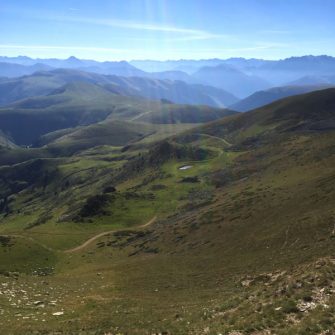 Port de Balès (credit: The Gap Decaders)
Port de Balès (credit: The Gap Decaders) Aerial view over the spectacular Port de Balès (credit: ©AG/Pyrenees 31)
Aerial view over the spectacular Port de Balès (credit: ©AG/Pyrenees 31) Grand vistas on the Port de Balès (credit: The Gap Decaders)
Grand vistas on the Port de Balès (credit: The Gap Decaders)
Highlights
- A real test of fitness – listed as only 5.7% average gradient, this is slightly skewed by some downhill and flat sections.
- Road surface is very good and there is little vehicular traffic.
- Stunning views from the last few kilometres.
- If you want to get away from it all and enjoy a quiet and peaceful ride then the Port de Balès certainly delivers.
Tips
- The middle section of the climb averages around 3%, so it’s a nice section to take a breather in.
- Check beforehand whether the climb is open. At just short of 1,800 metres, it can sometimes be June before the snow has cleared and it may be impassable from October onwards.
- Take plenty of food and as much water as you can accommodate as there is not much option to refuel. We saw hotel/restaurants in both Cirés and Bourg d’Oueil but you can never rely when they are going to be open or not, especially if you are there out of peak season.
- A wind jacket is a wise choice, particularly if you’re going straight over the top – it’s a quick descent and from this height you will be glad of the wind break.
Pyrenees accommodation for cyclists
If you’re looking for Pyrenees cycling accommodation, there is a host of bed and breakfast type accommodation in Luchon. We found it to be a cycle friendly kind of a place, as thanks to the Tour de France and Pyrenees cycling tours, it receives a lot of cyclist guests.
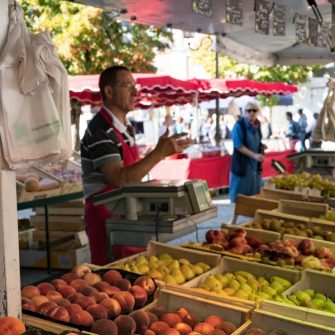 Traditional French market in Luchon (credit: ©AG/Pyrenees 31)
Traditional French market in Luchon (credit: ©AG/Pyrenees 31) Luchon embraces cycling!
Luchon embraces cycling! The Tour de France caravan passing through Luchon (credit: ©AG/Pyrenees 31)
The Tour de France caravan passing through Luchon (credit: ©AG/Pyrenees 31)Our choice: Patio de Luchon
We stayed at the family run bed and breakfast establishment, Patio de Luchon, which is well situated right in the town centre and gets great reviews.
The owners are very friendly and as well as providing an excellent breakfast were very helpful in providing relevant information about the surrounding cycling routes. They even called a local bike shop for us as we needed some urgent work on a bike.
Other accommodation options for cyclists
If Patio de Luchon is full or not suitable for you, we’d consider the Luchon accommodation options listed in our article on where to stay in the Pyrenees (for cyclists).
What we loved
- Quiet residence tucked away off the main street.
- Comfortable room and modern bathroom.
- Excellent breakfast.
- Friendly and helpful owners.
- Directly across the road from the patio is a coin-operated launderette.
- Walking distance to many cafes and restaurants.
Bagnères de Luchon bike hire
Prices, services and bike brands often change. Please let us know if anything is incorrect.
Whilst there are a few cycle shops that stock mountain and fat bikes for rental, we were surprised to find only one outlet in the town where you could hire road bikes. However, we can highly recommend it as we received excellent service for some routine bike maintenance work we needed while visiting.
Luchon Mountain Bike Co.
4 Place du Comminges, 31110 Bagnères-de-Luchon
The Luchon Mountain Bike shop offers a complete range of cycles for rental including road, MTB, children’s and tandems.
The road bikes featured are manufactured by Massi and Scott, you can choose between disc and rim brakes and carbon and aluminium frames. The bikes are fitted with 11-32 rear cassettes. Depending on what you choose, pricing is between 30 and 55 euros per day.
They have a wide range of sizes available and pedals (of your choice). A helmet and repair kit are included in the rental price.
They also stock a large range of bikes, clothing and accessories for sale and have a comprehensive repair service.
The Luchon Mountain Bike Shop is open 7 days a week between 9am and 12 noon and 1.30 to 7pm should you ever need any assistance.
When to go
Generally, the months from May to October are the best months to visit for road cycling in this corner of the Pyrenees.
Superbagnères and Port de Balès, the highest of the four main climbs from Luchon, are normally open by the end of May, whilst the Portillon and Peyresourde are kept open throughout the year save for spells of severe weather.
Temperatures sit at an average high of around 20 degrees in both May and October whilst the intervening months boast an average high of around 25 degrees.
Just bear in mind that all the green grass and lush terrain that is evident in the area is caused by a healthy amount of rain: the region is subject, on occasion, to weather fronts coming from both the Atlantic and Mediterranean. Thankfully, when it does rain in the summer months, it doesn’t tend to last for long.
For those not restricted by school holidays, we think September is a particularly great month to ride this region of the Pyrenees, as the roads are generally quieter, the busy holiday season has ended and it’s a touch cooler for climbing. Also travel and accommodation prices are not at their peak.
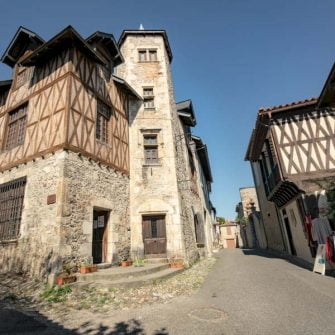 Picture postcard villages make cycling in this area a dream (credit: ©AG/Pyrenees 31)
Picture postcard villages make cycling in this area a dream (credit: ©AG/Pyrenees 31)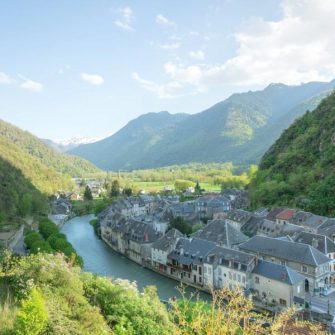 Saint Beat, near Luchon (credit: ©AG/Pyrenees 31)
Saint Beat, near Luchon (credit: ©AG/Pyrenees 31) The centre of Bagneres de Luchon – a nice place to chill after your ride
The centre of Bagneres de Luchon – a nice place to chill after your rideTips
Check out our tips for cycling in the Pyrenees – but it’s also worth mentioning the Meteo Blue weather app, which you should check before you go out. In our experience it’s quite accurate. And, as ever, pack a rain jacket!
Be aware that Bagnères de Luchon is not a big town by any means; its population is just 2,500 or so. Its prominence in cycling terms is due to its location and that of the Tour de France that usually passes through the town on its way to or from the Col du Tourmalet.
Other than for cycling, Luchon is very well known due to its thermal springs and old Roman baths. It’s twinned with the Yorkshire town of Harrogate.
If you are driving to the area be warned that as you leave the motorways and start to get into the mountains, there are a number of speed cameras and radar devices to control vehicle speeds throughout the countryside…
The nearest airports are;
Lourdes / Tarbes – 65k
Pau – 105k
Toulouse – 113k
Zaragoza (Spain) – 181k
Perpignan – 186k
Read on!
While Pyrenees cycling routes from Luchon and towns further west are plentiful and stunning, if they don’t satisfy your ambition why not plan a trans Pyrenees cycle route from coast to coast. This Q&A on the Raid Pyrenees coast to coast route gives lots of inside information.
You may also like to check out our other Pyrenees guide to the cycling climbs to the west Pyrenees – including the Tourmalet, Hautacam and Aubisque.
Our overview of cycling in the Pyrenees and our article on the best places to stay in the Pyrenees for cyclists might also come in handy.
Please support Epic Road Rides
A huge amount of time and effort goes into the article you’ve just read, all with the aim of helping you!
If you found what you’ve read useful, I’d really appreciate it if you dropped something in the tip jar here.
It’s a way you can say thank you and help us carry on creating top quality content with no annoying ads and no pay wall.
Looking for an organised cycling trip?
If you want someone to help you plan and book your cycling holiday, fill out this form. We aren’t a tour operator/agent but we work with lots of people who are and will do our best to put you in touch with someone that can help (within 24 hours where possible)!The contents of this website are provided for general information purposes only. It is not intended to amount to advice and you should not rely on it. You should carry out your own due diligence and risk assessments and take professional advice. Views expressed by interviewees or other users of this website do not necessarily represent our views. We make no representations, warranties or guarantees, whether express or implied, that the content on our website is accurate, complete or up to date. If you use any information or content on this website, download from, or otherwise obtain content or services through our website, it is entirely at your own discretion and risk. Epic Road Rides Ltd disclaims all liability and responsibility arising from any reliance placed on the information and content on this website. Find out more here.


